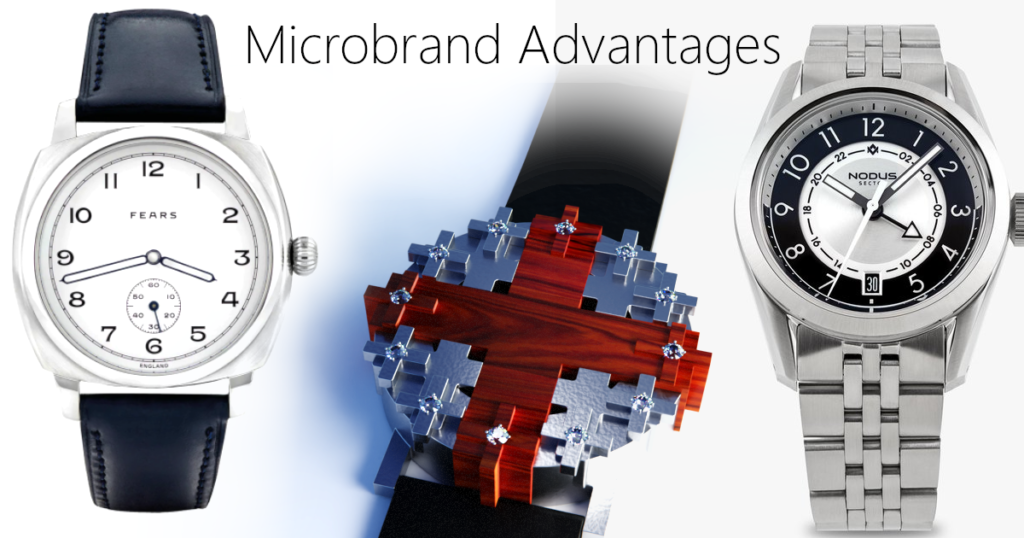
The watch in the middle is our Cross #1 watch.
Sections of this article.
- What is a microbrand? Definitions and concepts
- Context: how and why microbrands exist
- Advantages of microbrands
- Disadvantages of microbrands
- Some great examples of watch microbrands
- Unconstrainedtime: an unusual microbrand
Introduction
This article will be looking not just at the phenomenon of microbrands itself (there’s plenty of articles by watch experts which do that), but also looking at the context which created the existence of microbrands, to have a deeper understanding of how and why they arose and how they relate to other areas. Phenomena don’t happen in isolation, and are impossible to understand deeply without looking at what they relate to and why.
I’ll also look at advantages and disadvantages of microbrands, from a buyers perspective, and a few examples of microbrands I find particularly interesting, as well as details of why UnconstrainedTime is a unique microbrand.
What Is A Microbrand? Definitions And Concepts
First let’s look at what a microbrand is in general, then we’ll look at watch microbrand concepts and definitions.
Microbrands (or similar concepts named differently) exist in many industries these days starting from about the turn of the century, including craft beers (below), independent jewellery makers, and makers of a wide range of bespoke items from suits to motorcycles.

A microbrand, in general, is an independent company that manufactures small numbers of relatively higher quality products, offers unique designs at lower prices than bigger companies, sells directly to customers (often using e-commerce), and has a more personal relationship with their customers and fans.
As well as microbrands in other industries, these concepts apply to watch microbrands, who typically started by releasing just one watch in limited numbers, and still offer only a few in their collection. Microbrands almost always specialize in a specific style or concept. I’ll explain why we’re an exception to those last two points, below.
By contrast, big watch brands typically have a more traditional business model, selling through retail (which increases the cost to the buyer) and being controlled by a board of directors who’s only interest is profit, have many different watches in their collection and sell a much larger number of watches per year.
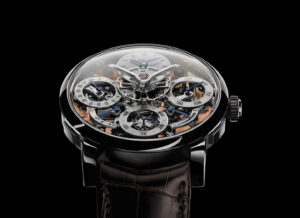
Watch microbrands need to be distinguished from small watchmakers, and from independent watch companies (and “watchmakers” meaning companies who make new watches, needs to be distinguished from “watchmakers” meaning people who repair watches). Most microbrands have the majority of the parts of the watch manufactured by other companies, whereas the term watchmaker is usually applied to someone who makes at least most (sometimes all) of the watch themselves (as UnconstrainedTime does). Some of the big watch companies, such as MB&F (above), Rolex, Patek Philippe, and Audemars Piguet are not owned by a group, so can be considered independent in that sense.
Microbrands either have a solo founder or are founded by a small group of friends or business associates, have only a relatively small number of employees, and sell a relatively small number of watches per year. Microbrands have engaged owners, with many microbrands being founded by people in their 30’s (our own brand is an exception to that too). While microbrands are typically more focused on making interesting watches than making money, to stay in business profits do need to be made in order for the company to continue existing.
Some non-micro brands who produce only a small number of watches per year, like Urwerk and MB&F, do so because of the complexity of their watches, which require a lot of time and skilled workmanship to produce (which, understandably, comes at a high price), and/or have only a narrow niche of potential buyers.
To give you an idea of the relative numbers of watch sales, Seiko sells about 20 million watches per year, Christopher Ward (which some people would now call an Independent rather than a microbrand) (image below) sells about 20,000 watches annually:
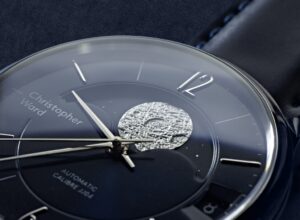
. . . and AnOrdain (a well loved microbrand) sells around 200.
A significant key to the success for most microbrands is the direct connection with watch enthusiasts, typically on social media, although sometimes in person as well. Most watch microbrands are founded by people with a genuine passion for watches, although a few microbrands seem to be just in it for the money.
Most microbrands have the majority of the watch parts manufactured by other companies, often in Asia, although a few microbrands were started out of love for producing parts, cases, dials, hands, and even movement components, such as Dingemans (d.m.h.), Ketelaars, and Holthinrichs (below). The best microbrands are open and transparent about where parts of their watches come from, although an understandably disliked minority try to hide the fact that their relatively expensive watches are built mainly using cheap parts from China.
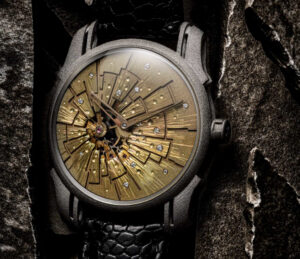
Many large mainstream watch brands contract out all their manufacturing, and almost all use movements made by someone else, so it’s not just microbrands which do this. Most big brands strive for the image of being vertically integrated, and while they may in reality work with external designers and part suppliers, they portray an image of a completely in-house watchmaker, often being marketed as if their watches are the personal creations of a single artisan (which is rarely the case, although does occasionally happen). This is largely because their marketing tries to link them to the concepts of traditional watchmaking as well as to art (for more on that, see my article: Are Watches Art?).
Some people say that most microbrands could be considered white-label companies, adding minor cosmetic touches to combinations of parts made by others, although, as I mentioned above, many of the big names also use movements and various parts manufactured by other companies. Our own brand is definitely an exception to that, with all components of our watch being entirely unique to us.
It could be said that Microbrands fill the gap that big brands leave open, resulting in healthy competition that means better watches for everyone.
Context: How And Why Microbrands Exist
Early watchmakers, doing everything by hand, could only make small numbers of timepieces, even with some of them having assistants and apprentices.
The industrial revolution created big brands that could produce relatively large numbers of watches relatively cheaply, differentiated from more expensive hand-made watches that were decorated and/or made of precious metals. As watchmaking evolved, manufacturers and craftsmen started specializing in dials, hands, movements, cases, etc. with some brands developing who assembled the parts and focused on marketing.
Society has always evolved by reacting against previous norms as well as due to innovations and new ideas, but in recent centuries this has dramatically increased in pace, with change becoming the new normal. This can be seen in the increasing frequency of new art movements through the centuries:
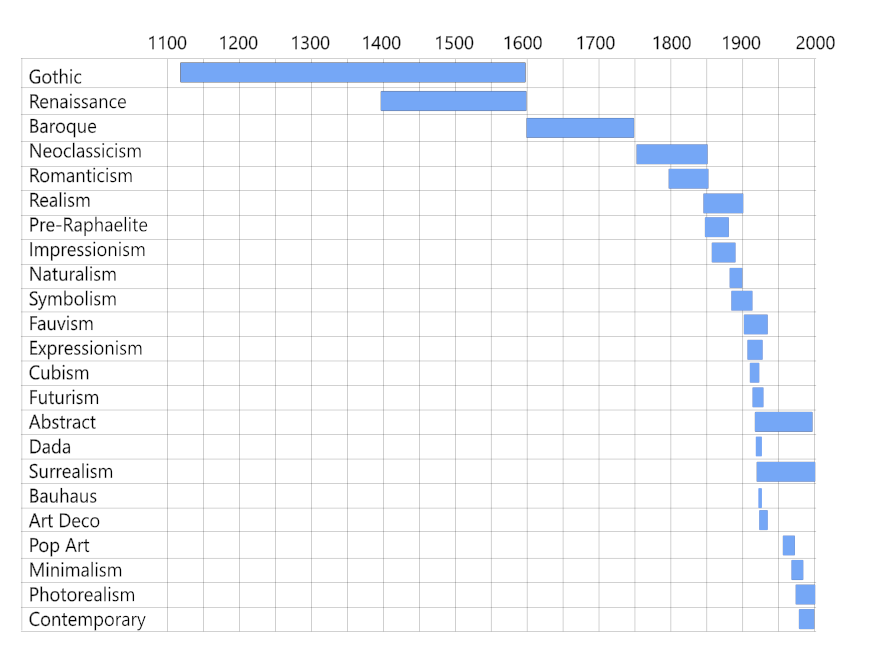
Different subcultures, with their distinct aesthetic preferences, after arising initially from things like different art and political movements, emerged in much greater numbers in the 20th Century, in parallel to the broadening of opportunities due to education, the increase of specialization from the industrial revolution and the improved standard of living of most of the population of the developed world.
The quartz crisis further polarized watches into cheap functional items or expensive beautiful ones.
Society continued to present an ever-increasing variety of choices, with the number of options and ease of access to them exploding with the rise of the internet and social media. Sub-cultures further fragmented, became much more fluid, and also merged, blending into individual uniqueness with mix-and-match styles and sample culture.
This presented new gaps in the market, especially for interesting, quality, niche brands, who could do various aspects of their business in a different way from the more traditional approaches of the big brands. This paralleled a resurgence of interest in artisan craftsmanship as well as enthusiasts and small brands wanting a closer level of involvement with each other.
There were watchmakers interested in doing something different, whether their dream watch didn’t exist or was not available at a reasonable price, or in manifesting a uniquely innovative or creative vision of their own.
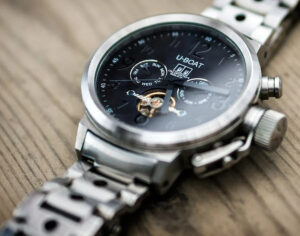
The first watch microbrands began in the early to mid-2000s., with the internet and social media facilitating their direct-to-consumer business model, and globalization making it easy to source parts from anywhere in the world. Watch brands founded in the year 2000 include U-Boat (Italian, above), Bruno Söhnle (German), and Aviator (Swiss, below).
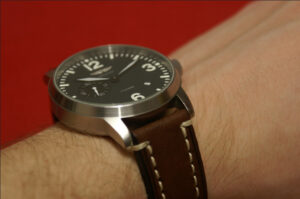
Nostalgia is a popular subculture generally these days, and even more so in the world of watch enthusiasts. High quality watches were, until recently, only available to the elite, who mostly enjoyed their inherited status due to their family history which they, understandably, placed a lot of focus on, so it makes sense that one of the major interests of the world of horology is tradition. Other watch enthusiasts love uniqueness, creativity and new ideas.
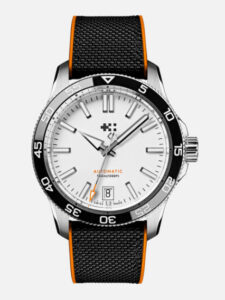
Like everything, microbrands evolve. Some of them are now well established, well known for reliability, quality and customer service, and growing bigger. Some are becoming small independent’s rather than microbrands, such as Christopher Ward (above), a British company founded by Christopher Ward, Mike France and Peter Ellis in 2004, now considered more of an independent than a microbrand (and can also be seen as a British luxury brand), some experimenting with high-end watchmaking, others enjoying the creative freedom that being a microbrand allows, to explore new territory. (see below).
Advantages Of Microbrands
As I’ve mentioned above, microbrands have a less expensive business model, more freedom, they can listen to enthusiasts and fans, and are often built around passion rather than profit (although not always, as we’ll see below). Big brands are often more sales oriented and typically controlled by a board of directors only interested in profits, compared to microbrands who are often creating watches based on personal passions.
While some people like wearing famous watch brands that others might recognize and admire, other people love the idea of wearing something unique, that almost no one else would ever have, and some, of course, wear watches because they like them personally, without being concerned with what others think.
The emotional value of microbrands can be very significant. The passions of the founders can often be expressed effectively in the watches, for example, Maximilian Büsser, founder of MB&F (which can be seen as more of a watchmaker than a microbrand), creates amazing watches which relate to his childhood obsessions, like this HM6 inspired by a science fiction spaceship:
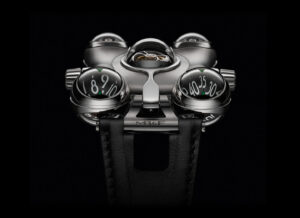
It’s nice to be able to interact, in person or via social media, with the brand owners. You can do that with microbrands, but not really with the bigger brands.
Even though they are often being produced in the same factories, due to using a different business model and philosophy, the prices of microbrand watches are generally significantly lower than similar luxury-tier watches, for the same quality and reliability.
Bigger brands cannot afford to take risks, since they have a board of directors focused on profits. Microbrands can choose to take risks, some of which will work out, some not. Which is great for enthusiasts who know what they want and can recognize it when they see it. Ming is a great example of doing something different rather than sticking with the same approaches most others are using . . . instead of trying to compete in the usual ways, they chose to innovate, producing what, at the time of writing, is the world’s lightest watch, at 8.8 grams:
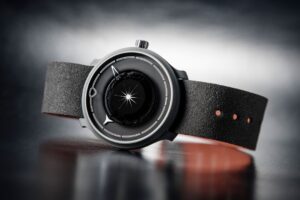
Another example of a microbrand choosing to go their own way is Holthinrichs. Instead of following the fine watchmaking tradition (based on fine jewellery) of smooth, perfectly polished surfaces, they chose to proudly show the raw 3D printed texture on some parts of their watches:
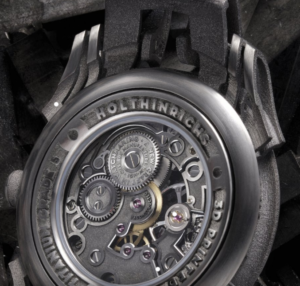
This relates to philosophies other than fine jewellery with its simple geometric shapes and smooth, polished surfaces. That’s not the only option these days, with art jewellery (and the movements which it arose out of, such as the Arts and Crafts movement, Bauhaus, etc.) welcoming a much wider range of options, often using complex, organic, rough or even broken forms and surfaces as well as materials like wood or plastic. Whether the watchmakers are consciously aware of the background behind this difference, or not, they are now selling watches using approaches which would have found no acceptance even a few decades ago . . . what society finds acceptable has evolved, and one’s relationship to the concepts inherent in the society one is living in, is unavoidable (even when one deliberately does the opposite).
Disadvantages Of Microbrands
Two of the main disadvantages to many (although by no means all) microbrands are lack of quality control and lack of spare parts. Both of these factors relate to the shorter-term perspective of some new microbrands, in contrast to the best of established brands. Looking at a new microbrand, you can’t know whether they will still be in business in a few decades to service your watch.
When you’re receiving a watch already assembled from other people’s parts, as some microbrands are, or even worse, if the watch is drop-shipped directly from the supplier to the buyer without the brand owner even seeing it, it is unrealistic to implement a rigorous quality control process. By contrast, UnconstrainedTime watches are assembled and checked by hand, by the leading British watchmaking service (Horologium UK), who make watches for many very well respected British microbrands.
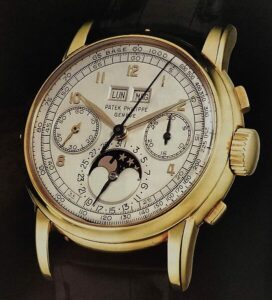
Many microbrands are unable to supply spare parts, although there are a few which can. Rolex and Omega still have spare parts for watches which stopped being produced over 40 years ago. Patek Philippe (above) will repair any of their watches, no matter how old it is, and can recreate any part of any of its historical watches. On the other hand, the cost of repairing one of the higher-end watches is likely to be more than the cost of buying a new microbrand watch, so make sure you have this all in perspective. Our own brand is able to make any spare part for any of our watches at any time since nearly all parts of the watch are 3D printed (the body/case of the watch being polished by hand), or use other repeatable processes like precision CNC milling, and can easily make the necessary 3D files available publicly if we ever go out of business.
It also makes a lot of sense that enthusiasts don’t like microbrands that just copy ideas from other brands, or which are not offering anything genuinely interesting, just using cheap parts from Asia with a big mark-up, with a focus on profit. Some microbrands are really just virtual businesses that are a middleman rebranding existing “white-label” watches from another company, or just putting together cheap parts and adding a big mark-up.
A microbrand needs more of a USP (unique selling point) than just being new, just as an established brand needs something more than just being old.
Also, the high-end quality that’s the difference between a less expensive watch and a much more expensive one which both have the same mechanical specification, can be difficult to convey online, but might be more easily seen in person, at least by someone with plenty of experience.
While some watch lovers see microbrand’s using crowdfunding or having watches on pre-order as “not wanting to risk your own money”, in reality, most people don’t have the $40k needed for a typical microbrand start-up, making that an unrealistic criticism. While there are crowdfunded brands that are only interested in profit, the idea that all crowdfunded watch brands are somehow “negative”, is just incorrect.
Some Great Examples Of Watch Microbrands
First, a few examples of great microbrands which don’t necessarily fit the definition of a microbrand any more . . .
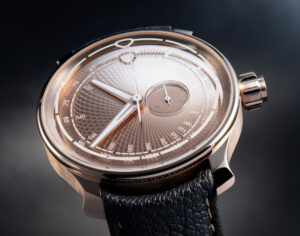
Ming (above) and Christopher Ward (their C65 Aquitaine GMT shown below) are relatively small brands which some people would now call an Independent rather than a microbrand.
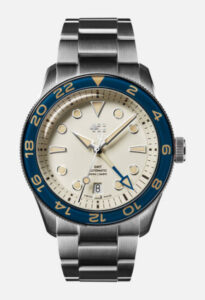
AnOrdain can be considered more of a watchmaker than a microbrand. They are in Glasgow, Scotland, and make mechanical watches with enamelled dials.
And Kurono Tokyo is actually a side project to a very respectable independent watchmaker, so they never were exactly a micro brand to start with. Their watches are individually handmade by a master artisan, yet not as expensive as they would be from a big name brand.
Some of the microbrands I find particularly interesting include:
Fears was founded in 1846, in Bristol, UK, by a young watchmaker called Edwin fear. The business has grown successfully as it passed through generations of the fear family going from Edwin to his son then to his grandson. The brand survived global conflicts, with its premises being bombed during the second World War.
The great great great grandson of Edwin Fear, Nicholas Bowman-Scargill went from being an apprentice watchmaker repairing Rolexes, to restarting the family business in 2016. The few British watchmakers at the time were understandably reluctant to give away the secrets of their success so he flew out to a big watch trade show in Switzerland and asked a lot of questions.
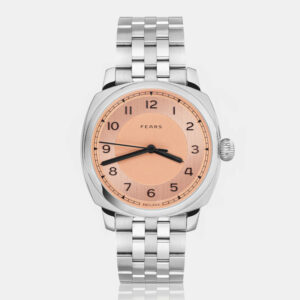
The company was relaunched near the end of 2016. Within three years they’d released the Redcliff ‘Streamline’, inspired by Fears’ original ‘Streamline’ watch from 1946. Nicholas says that there are easier ways of making money than starting a watch company, but if you’ve got a real passion for it, and want to build something for the future, he’s glad he did it. In 2021 the company celebrated its 175th anniversary by releasing the ‘Archival 1930’ which is a re-creation of an Art Deco style rectangular watch Fears made in 1930.
REC watches, each one including parts of a wrecked vehicle (including a Spitfire, and an SR71), so each watch has its own unique origin story and design influences.
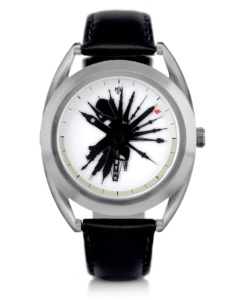
Mr. Jones watches (maybe not a microbrand any more, maybe more of a watchmaker since they make a lot of the parts themselves, although they still make watches in small numbers) makes unusual watches, often working with artists or illustrators. Many of their timepieces are quirky (like the “Time Traveller” above), while some of them, like Sun and Moon, or Paper Crane (below), being more focused on beautiful aesthetics.
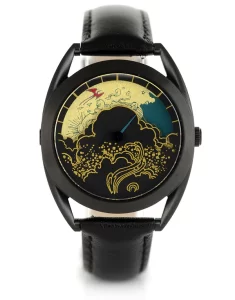
LIV Watches has gained attention for its approach to design. The microbrand involves its community in the design process, allowing enthusiasts to vote on features and details of upcoming timepieces. This crowdsourced approach not only fosters a sense of community but also results in limited edition watches that are truly unique and reflective of the preferences of the brand’s dedicated followers.
Nodus Watches. Founded by Wesley Kwok and Cullen Chen in 2017, Nodus Watches is a California-based microbrand that emphasizes rugged yet refined timepieces. The founders, both watch enthusiasts, recognized the need for affordable, high-quality watches that could withstand everyday adventures.
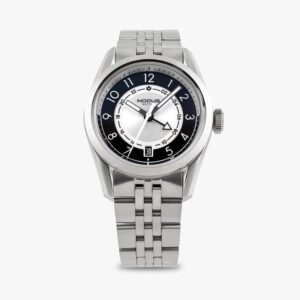
Nodus Watches’ commitment to quality and affordability resonates with a growing community of watch aficionados.
Breda produces watches that have a discrete elegance. Small delicate timepieces with a timeless style that look significantly more expensive than they are.
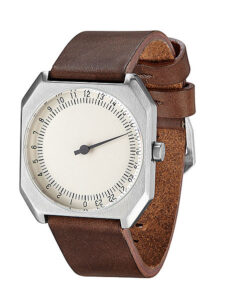
. . . show the approximate time, with all 24 hours around the edge of a single dial, helping foster a more laid back perspective on time. Another example of a microbrand which has a relaxed perspective on time is MeisterSinger:
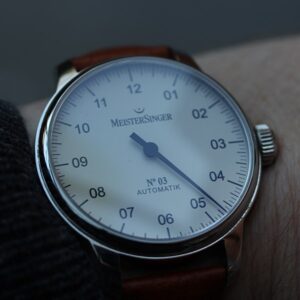
. . . known for its single-hand watches, offering unique and distinctive traditional-based timepiece designs.
Coggiola produces timepieces from repaired old watch movements, proudly displayed for all to see.
Visitor Watch Co., based in Greenwood, Indiana, is known for its offbeat and unconventional designs. The microbrand incorporates unique case shapes, unusual dial layouts, and distinctive hands that challenge traditional watch aesthetics. In addition to their quirky designs, Visitor Watch Co. often collaborates with independent movement makers, bringing innovative and reliable movements to their timepieces.
Unconstrainedtime: An Unusual Microbrand
Unusually, we’re launching with more than one watch in our collection. There’s a good reason for this . . . our brand is about freely chosen creativity, rather than any specific aesthetic. I wanted to show from the beginning how a wide range of different aesthetics can be part of our brand, with inspirations from ancient crosses to contemporary techno-circles, delicate organic objects to blocky rectangular forms, sharp edged crystals to the sweeping alien curves of a fractal. All those inspirations, and many more, can be explored by UnconstrainedTime while still making sense as a brand with a clear and passionate focus . . . on freely-chosen creativity itself, unified with a 12-point time-display from the genesis of horology.
UnconstrainedTime is not the only microbrand to start by showing a range of aesthetics . . . Mr. Jones watches started with 5 different watches.
We’re making good use of the microbrand freedoms and business model to develop in our own direction, starting with my own personal creative explorations and planning to welcome other creative input with our collaborations and art/design competition.
Our community platforms allow owners to share experiences, creating a collective narrative around these artistic expressions. Every UnconstrainedTime piece becomes part of a shared journey—connecting collectors who recognise that true artistic innovation transcends conventional categories. Inspiring others to explore their personal creativity is part of the concept of fine art, and our brand philosophy.
As for spare parts and quality control, most parts of our watches are made in the UK, assembled and finished in England by a leading watchmaker (Horologium UK) who makes watches for many very well-regarded British microbrands. Most parts of our watch are 3D printed, so can be created at any point in the future as needed for repairs. All our parts are unique to us, with none of them being made for other watches, which is partly due to me not having any background in conventional watchmaking. So instead of pushing the boundaries of existing watchmaking (as many of the other unusual watch brands state they are doing), I am creating a new branch of horology . . . unlike other artistic watches that simply decorate conventional designs, our entire timepiece is conceived as a unified artistic statement – making us the first brand to truly unite the worlds of fine art and horology.
Every UnconstrainedTime watch includes its creator’s signature, and part of a small, curated collection – bringing true fine art from gallery walls to your wrist.
We’re definitely not a brand that’s just copying ideas from other brands. Our time-display (based on the 12-point concept from the ancient Near East) is entirely original to us (although we welcome others using it too), and is an important part of what makes our watches function aesthetically, since its simple, small footprint design with far less archetypal significance than a conventional dial or numerals, facilitates much more focus on the unique creative aesthetics of each of our very individual watches. I’m sure it’s obvious from looking at our watches that the aesthetics are unique and unusually creative, and . . . our watches meet the definition of art:
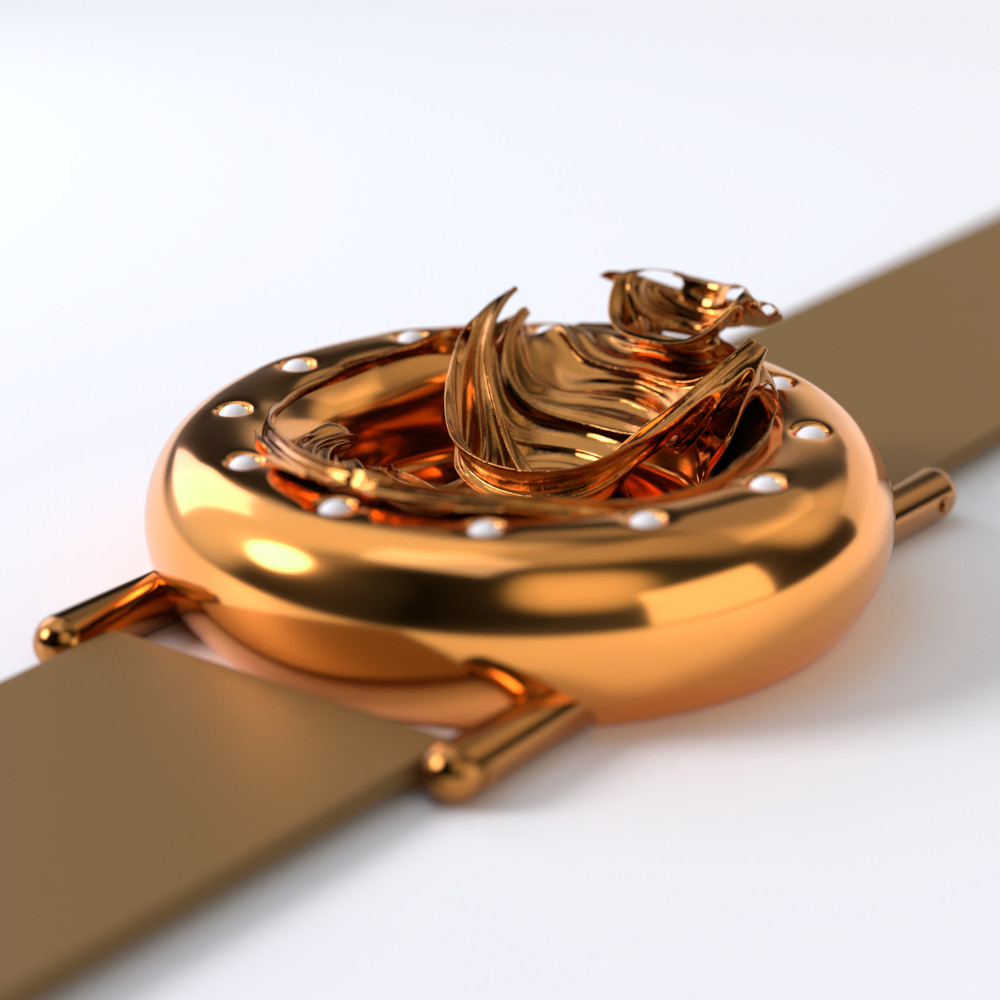
Fractal Emergence (above) is the watch we’ll be launching with, so . . .
Don’t miss our launch!
Get notifications here for early access to our small, numbered releases, exclusive creator insights, and behind-the-scenes glimpses of our artistic process before they’re shared anywhere else.
What is your favourite microbrand and why? Tell us in the comments below . . .
Author: Chris Melchior

This article was authored by Chris Melchior, founder of UnconstrainedTime and creator of the original range of wrist-worn sculptures of this unique artistic adventure.
Chris has extensive knowledge and experience of creativity, including fine art and cutting-edge contemporary music composition, and was awarded a First Class Honours Degree in fine art and music with a minor in philosophy.
Chris’s life-long artistic obsessions include organic forms and textures, abstraction, fractals, and the aesthetic essence of musical genres.
He has developed unusually deep insights into the elemental concepts underlying areas including Eastern and Western philosophies, science and technology, creativity and the arts, as well as empirical spirituality in which he is acknowledged as a leading authority.
He has a profound fascination and love for the unique and synergistically creative combination of fine art with the ancient essence of time-keeping which evolved into the UnconstrainedTime project.

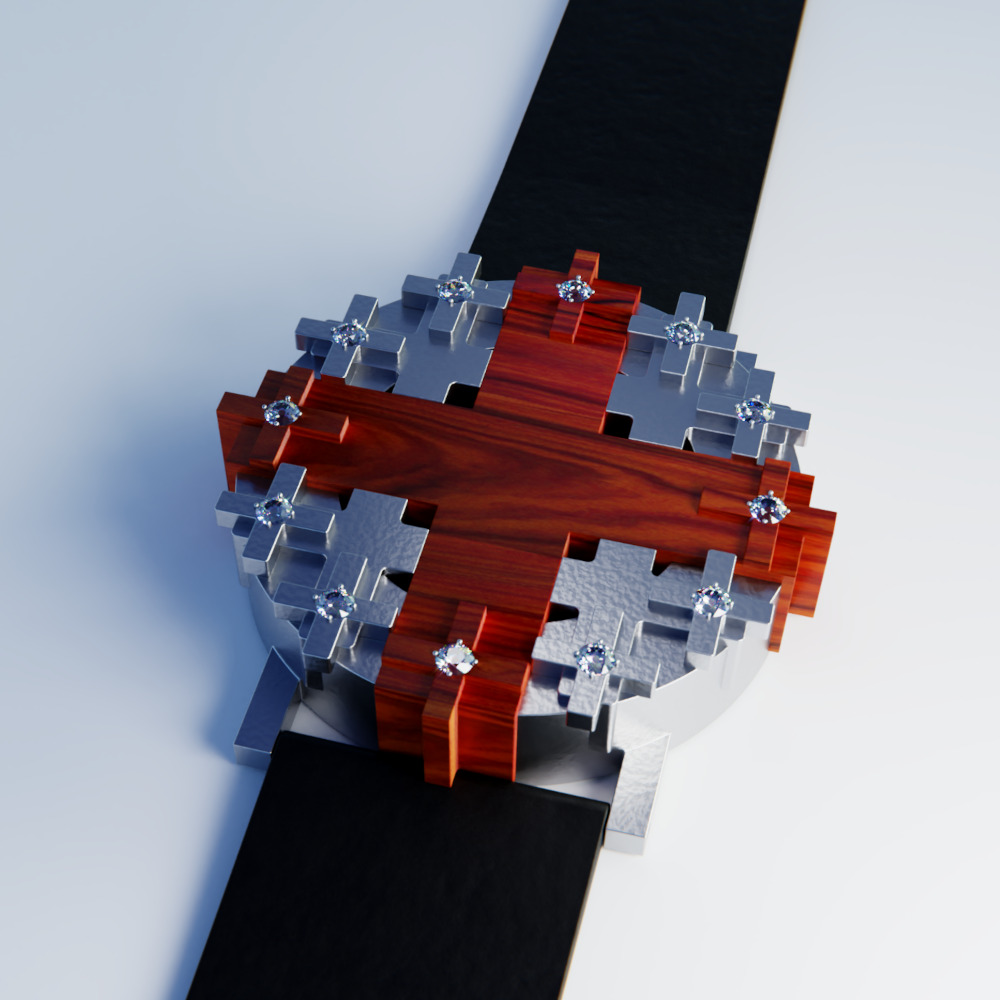
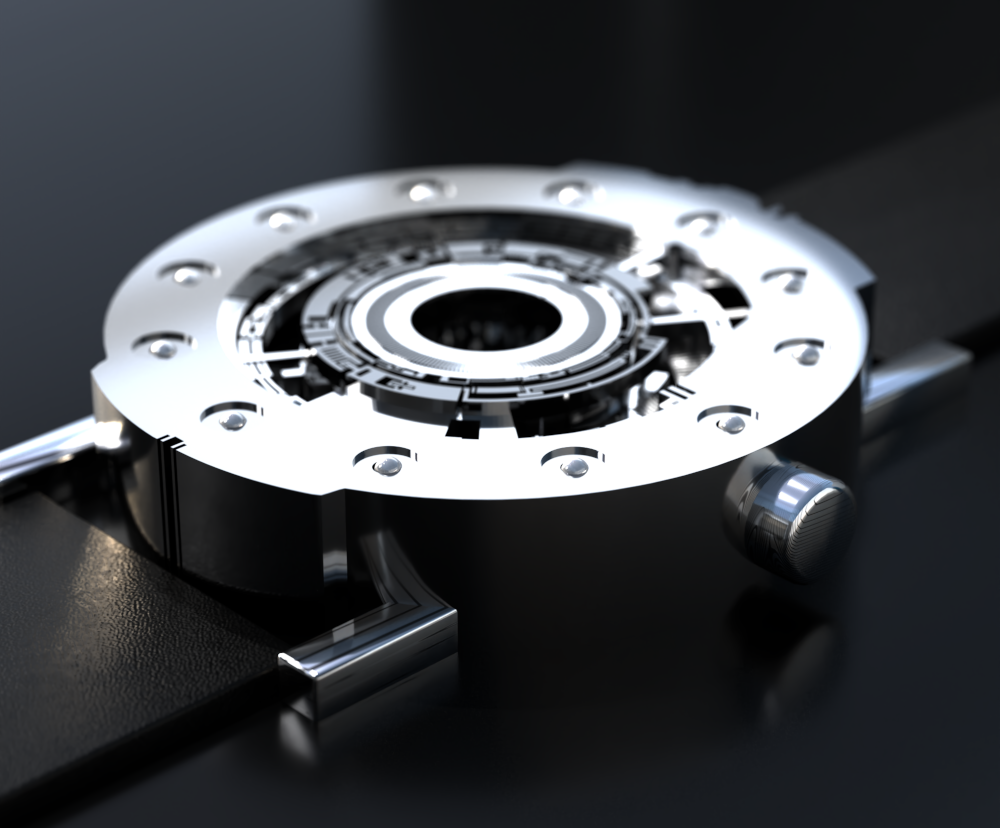
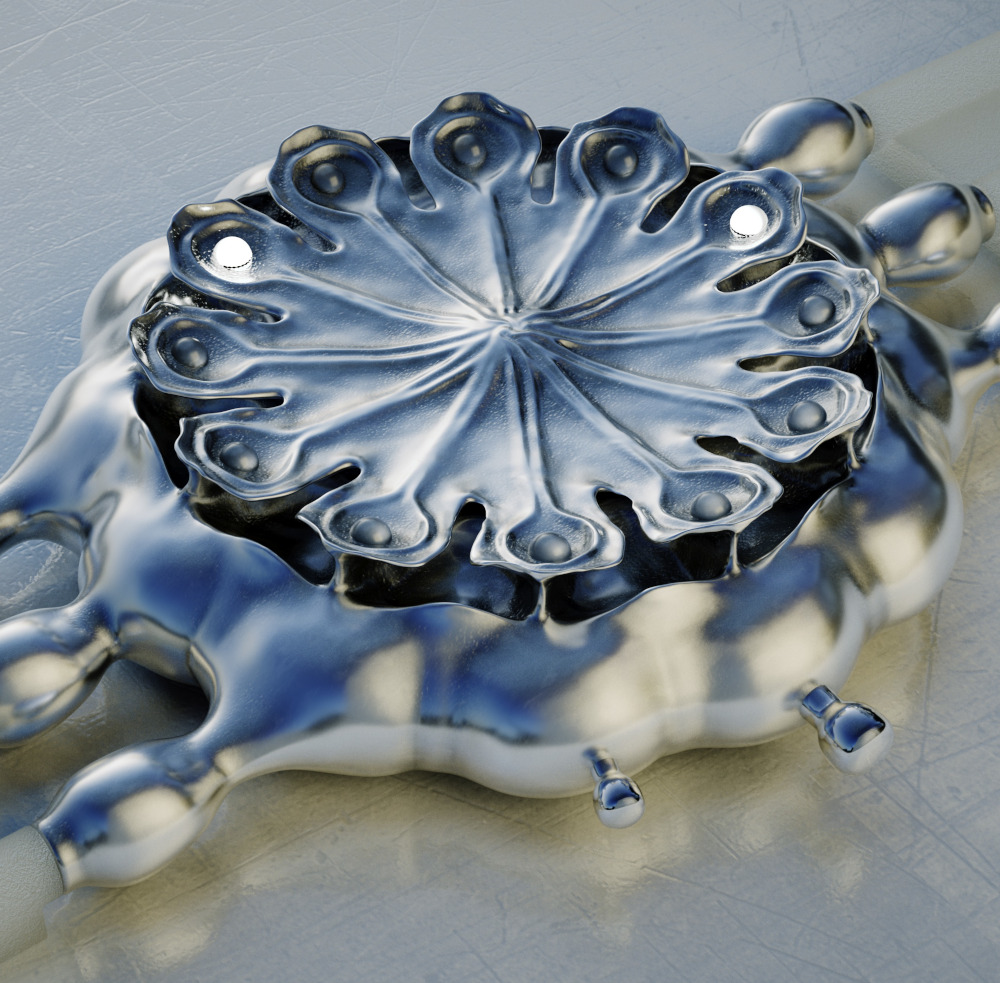
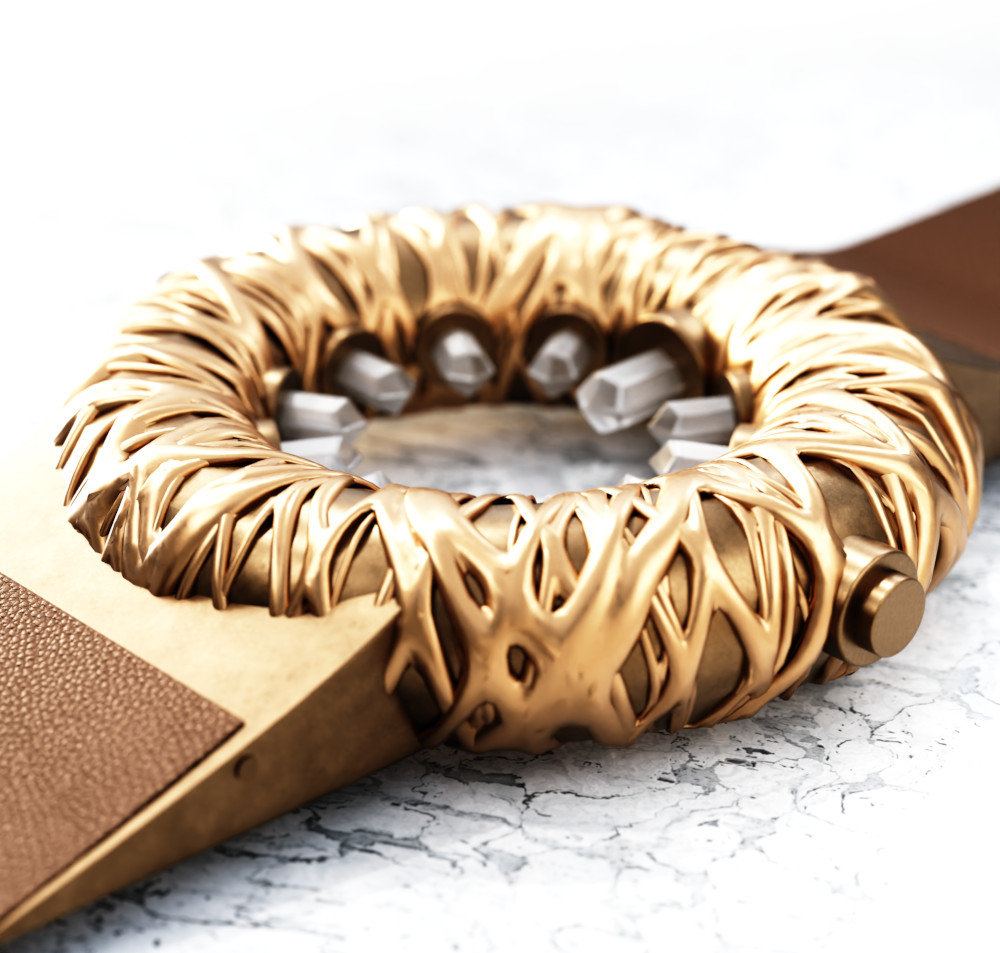
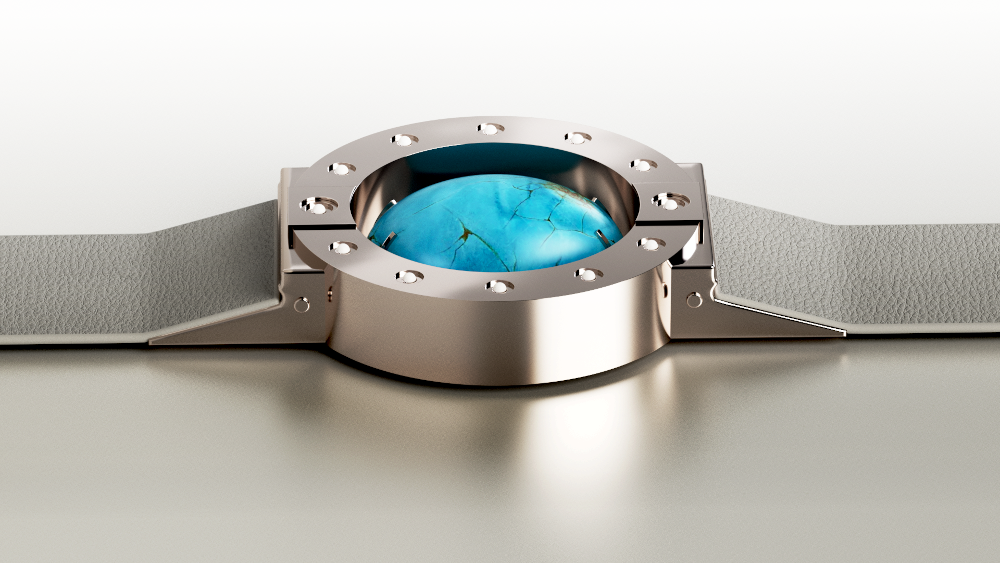

Leave a Reply